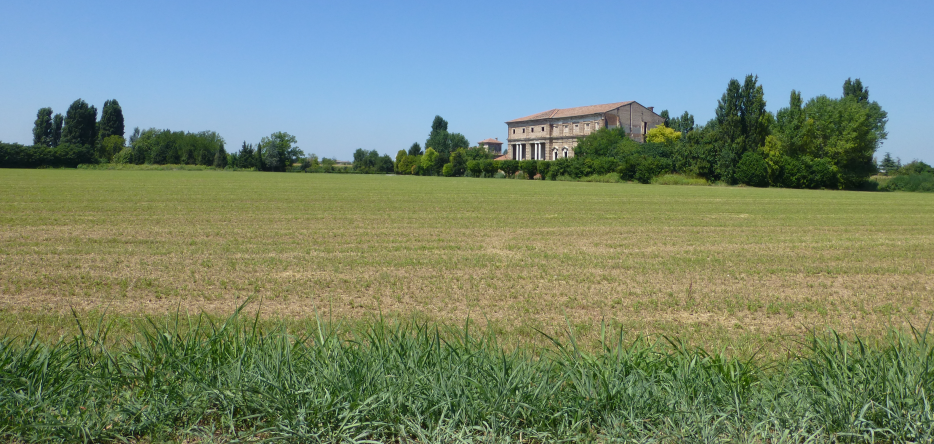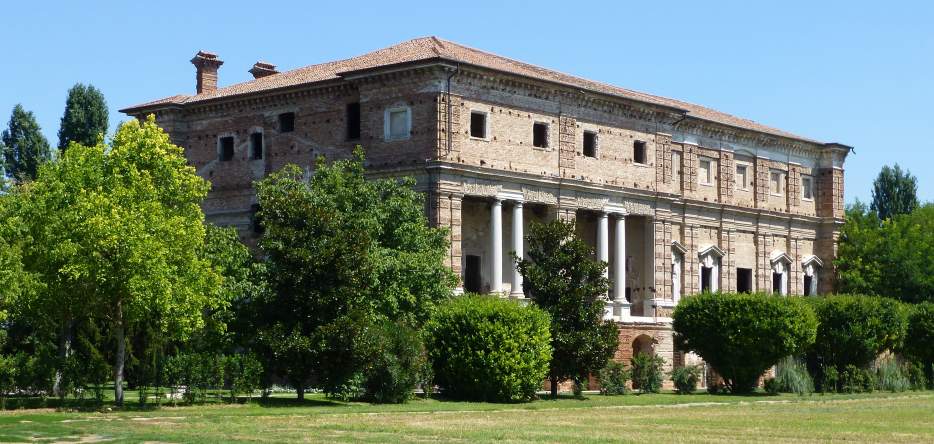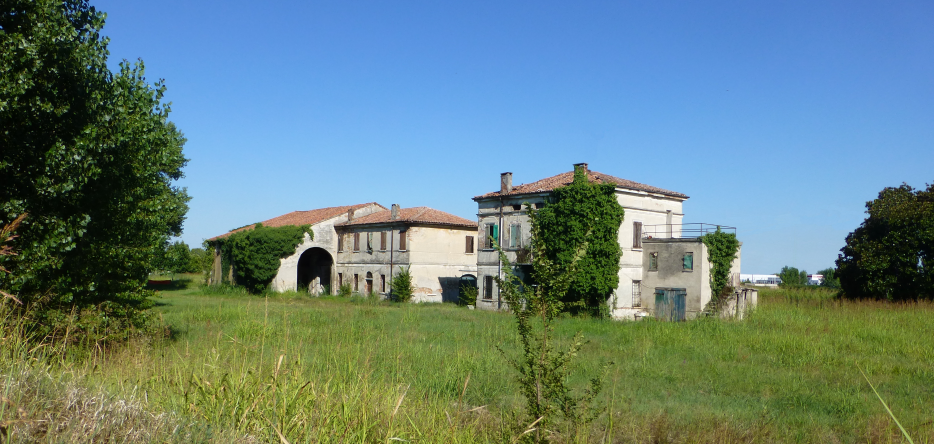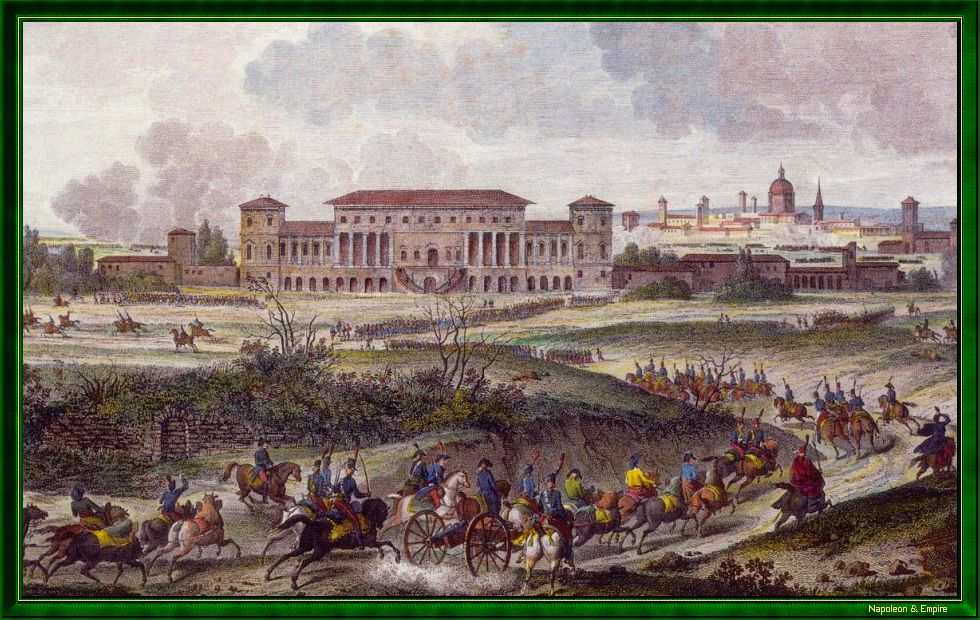Date and place
- January 16th, 1797, at La Favorita, near Mantua, northern Italy.
Involved forces
- French army (about 15,000 men) under General Napoleon Bonaparte.
- Austrian army (approximately 15,000 men) under Generals Dagobert Sigismund von Wurmser and Giovanni Provera.
Casualties and losses
- French army: 1,200 men killed or wounded, 1,800 prisoners.
- Austrian army: 1,300 men killed or injured, 4,700 prisoners, 22 cannons.
Aerial panorama of La Favorita battlefield
General situation
The Austrian general Dagobert Sigismund von Wurmser, besieged by French troops in Mantua [Mantova] since August 1796, attempted a sortie on 16 January 1797, coinciding with the arrival of a relief column commanded by General Giovanni Provera.
Provera had between 6,000 and 7,000 men. Wurmser had between 8,000 and 10,000 men. On 15 January, General Jean-Mathieu Philibert Sérurier could only muster 6,000 men.
But, rather than take advantage of their numerical superiority, the Austrian generals preferred to wait until the following day to engage in battle. They were probably convinced that Napoleon Bonaparte, who was fighting near Rivoli Veronese, 60 kilometers to the north, would not be able to intervene in time.
This miscalculation was to cost them dearly.
The fight
On the 16th, at six o'clock in the morning, Wurmser set off to the north of the town to find Bonaparte's troops in front of him, having arrived during the night. Provera, for his part, was held back by the troops of Generals André Masséna and Victor (Claude-Victor Perrin), whom the French commander-in-chief had assembled and taken with him the day before. The Austrians soon realised that they would not be able to break through.
The fighting took place on the plain of La Favorita , north-east of Mantua, separated from it by the Lago di Mezzo (one of the three Mincio lakes surrounding the historic city).

In the middle of the battlefield [45.18494, 10.80066] stood the Villa, a building constructed at the beginning of the 17th century by the ducal architect Nicolò Sebregondi on the orders of Ferdinand Gonzaga, sixth Duke of Mantua, who planned to move the court there. [Today, compared to the time of the battle, the two wings and the right side of the main building have disappeared].

The fighting also extended to the hamlet of San Giorgio [S. Giorgio di Mantova, and since 2018 S. Giorgio Bigarello] [45.16582, 10.83225], two kilometres to the south-east:

After several hours of fighting, Wurmser had no choice but to withdraw his troops to Mantua.
Provera, facing enemies nearly four times his own numbers after Charles Augereau's late arrival on the battlefield, had no choice but to lay down his arms. He did so at around ten in the morning, giving the order to his 6,700 soldiers, who joined the huge cohort of prisoners at Rivoli. In three days, the 42,000-strong Austrian army had lost 26,000 men.
Aftermath
After this battle, the surrender of Mantua could no longer be delayed. It took place on the following February 2nd.
Picture - "Battle of La Favorita". Painted by Carle Vernet.

 Display the Map of the First campaign in Italy (1796-97)
Display the Map of the First campaign in Italy (1796-97)
Photos Credits
Photos by Lionel A. Bouchon.Photos by Marie-Albe Grau.
Photos by Floriane Grau.
Photos by Michèle Grau-Ghelardi.
Photos by Didier Grau.
Photos made by people outside the Napoleon & Empire association.